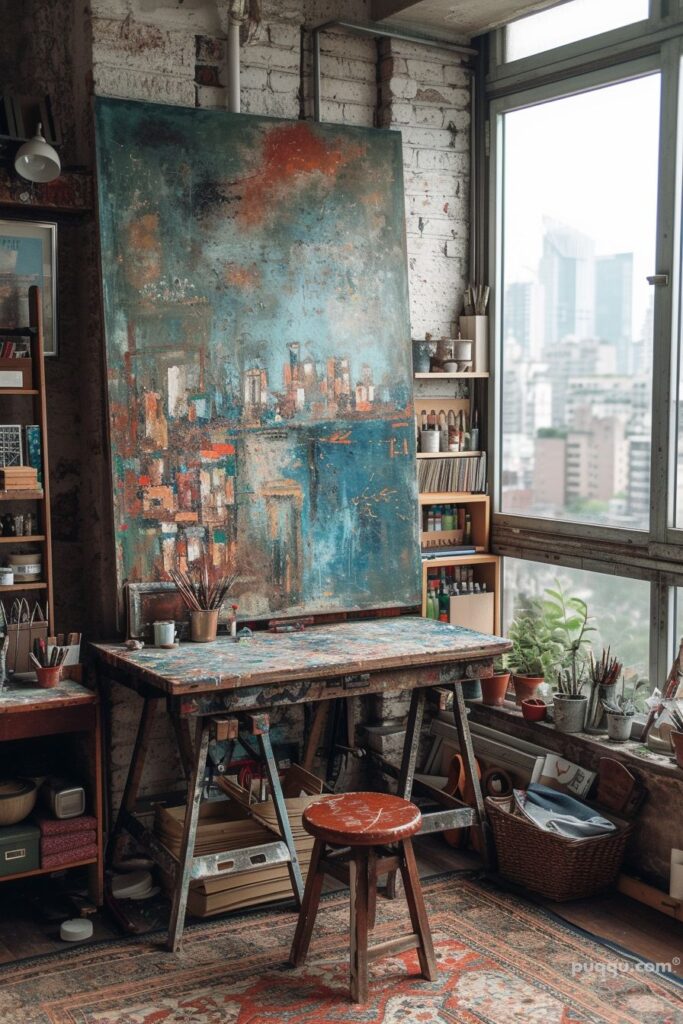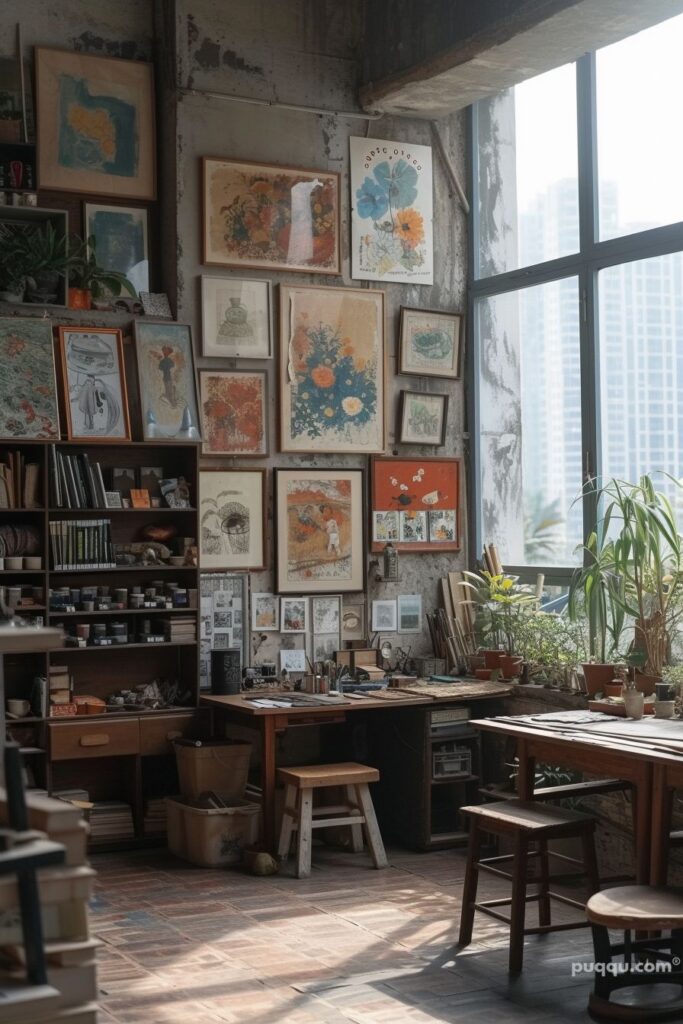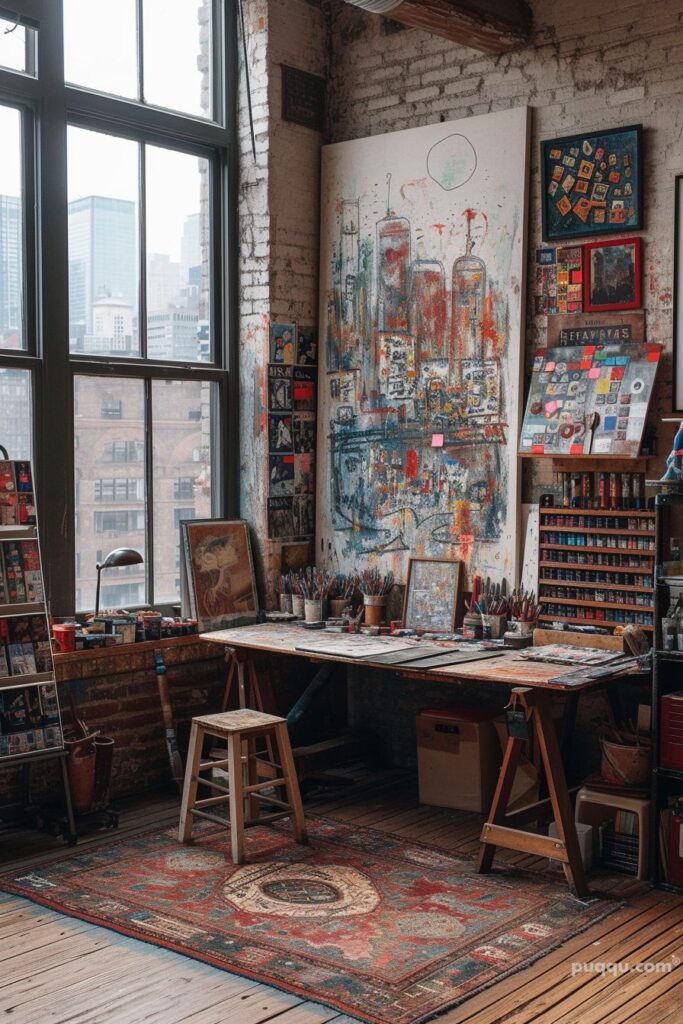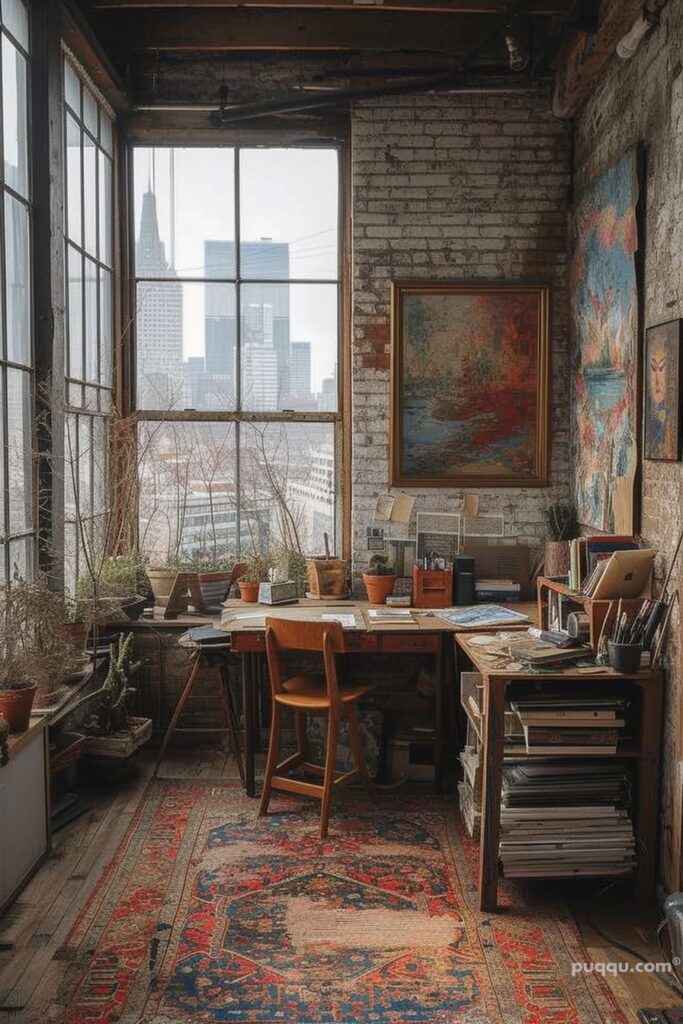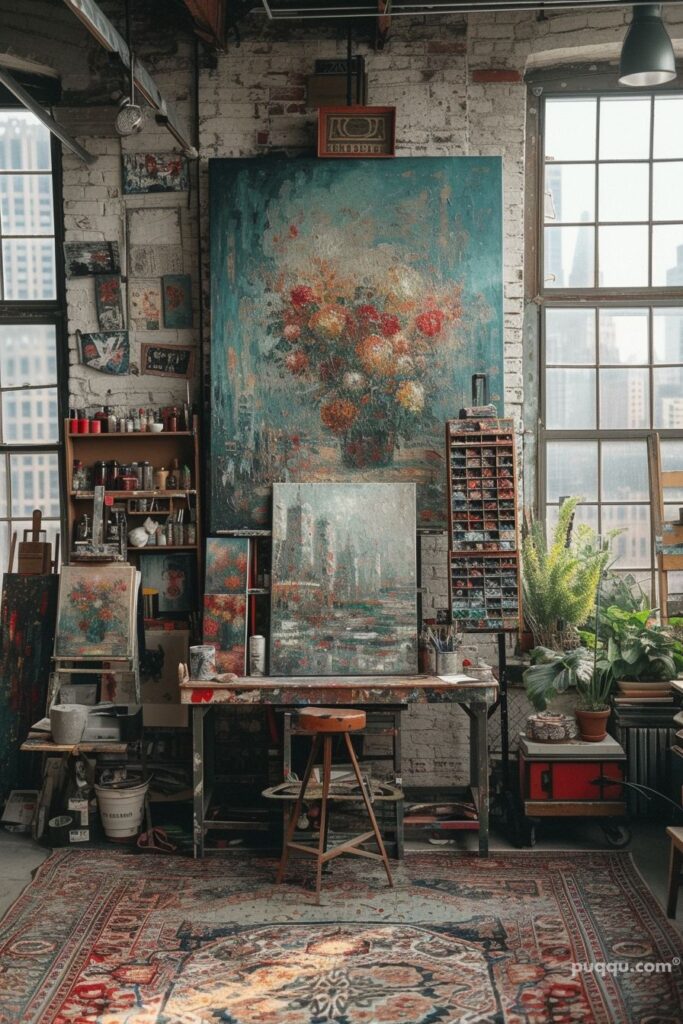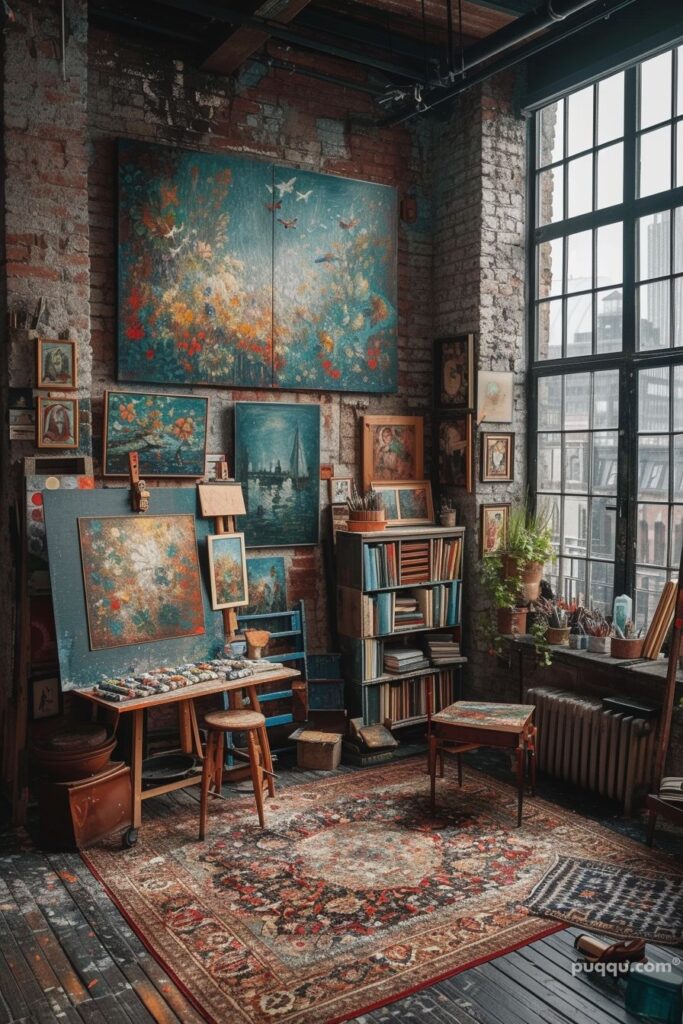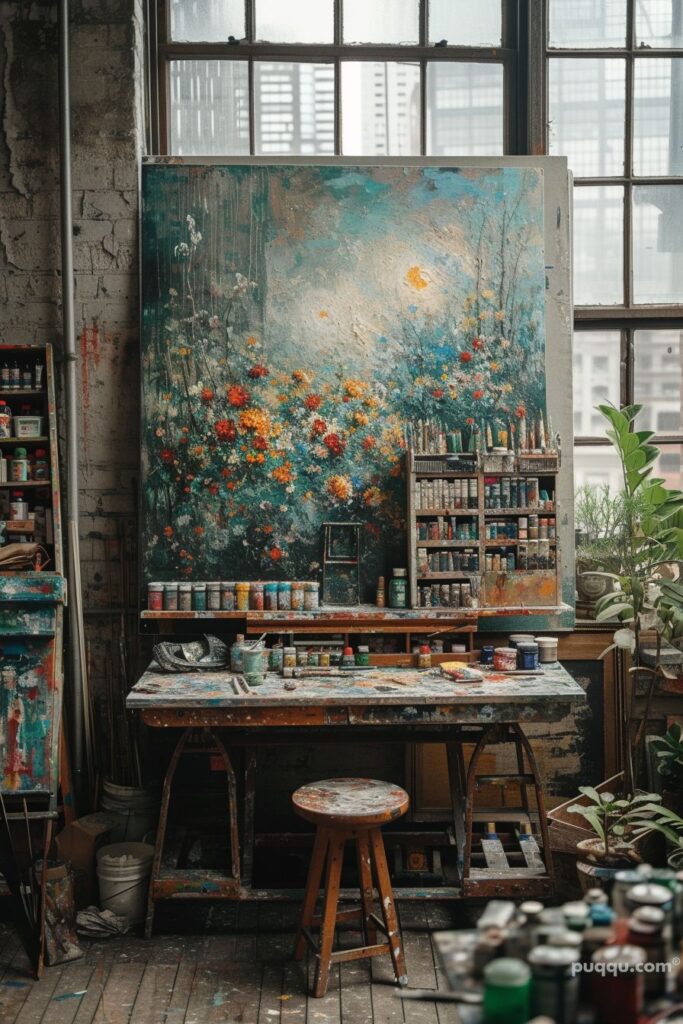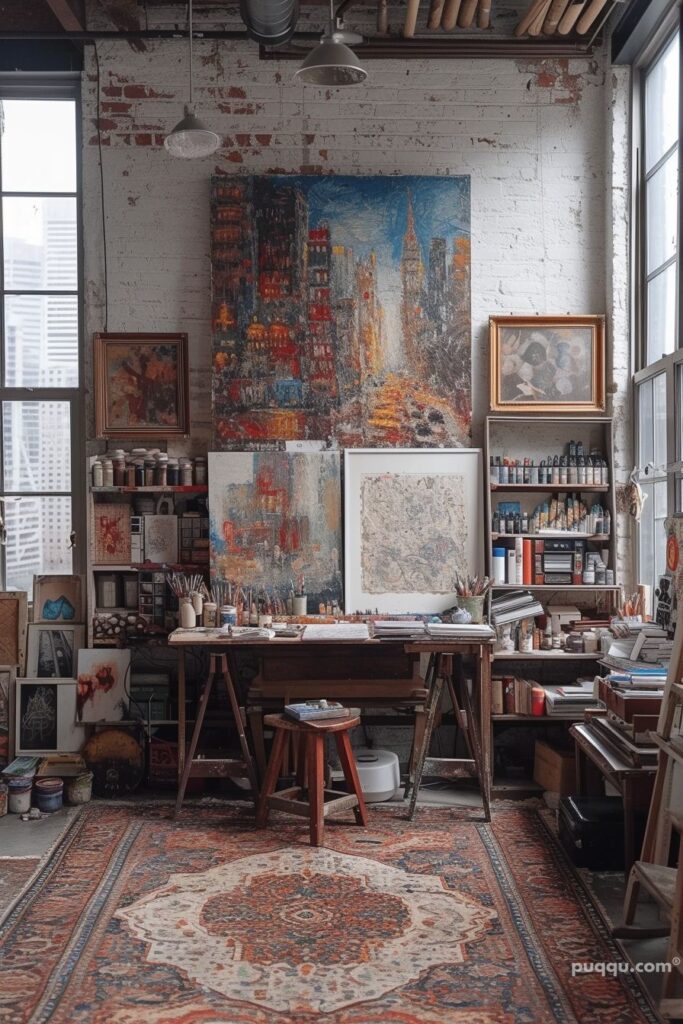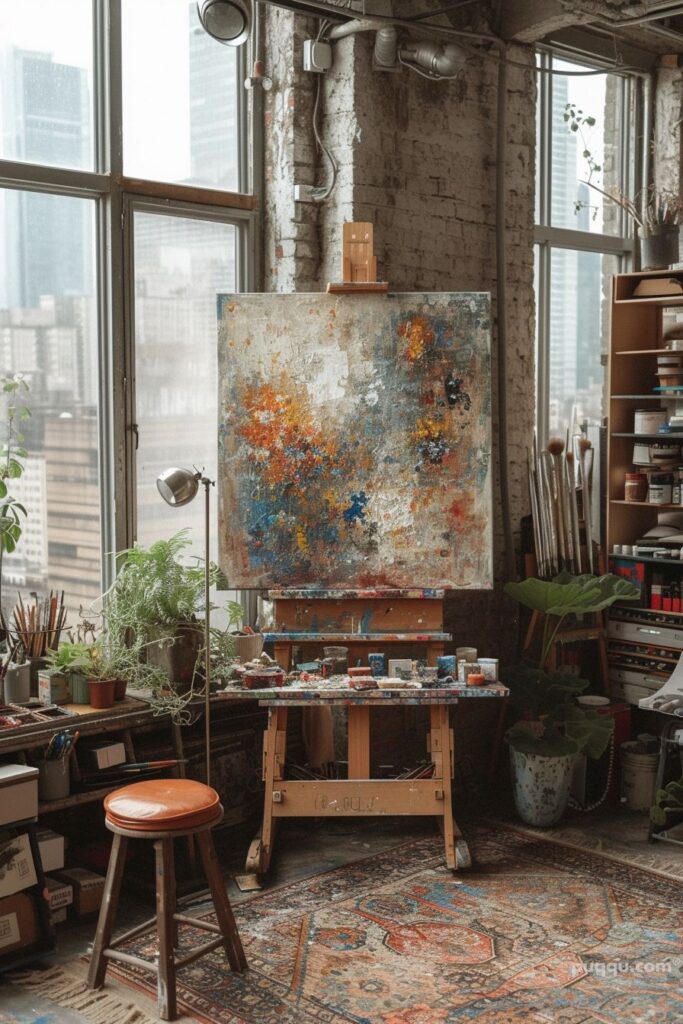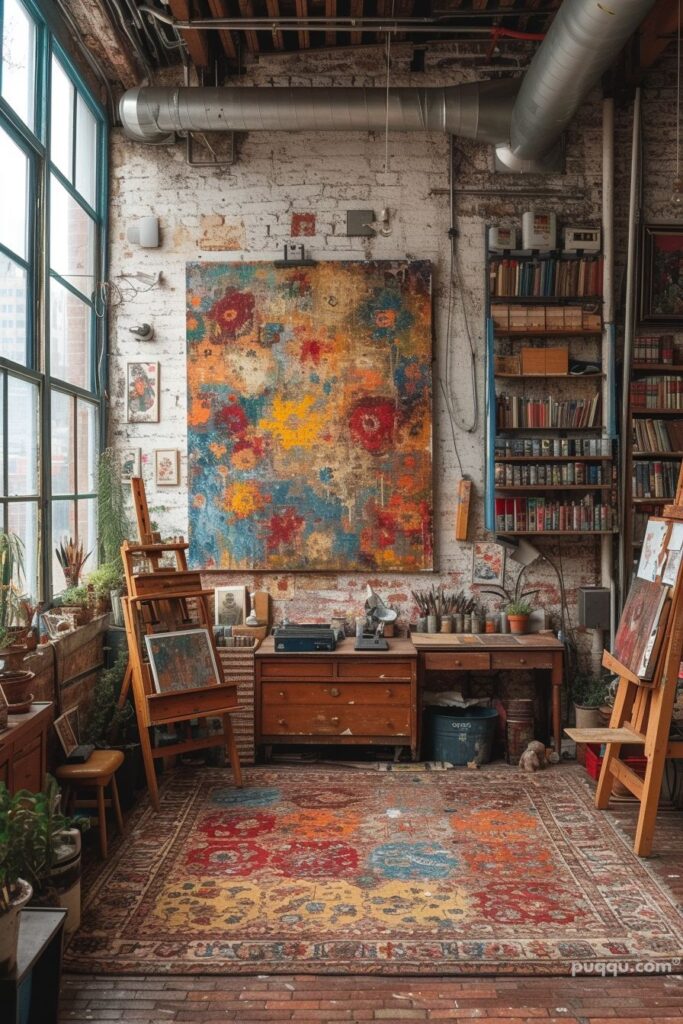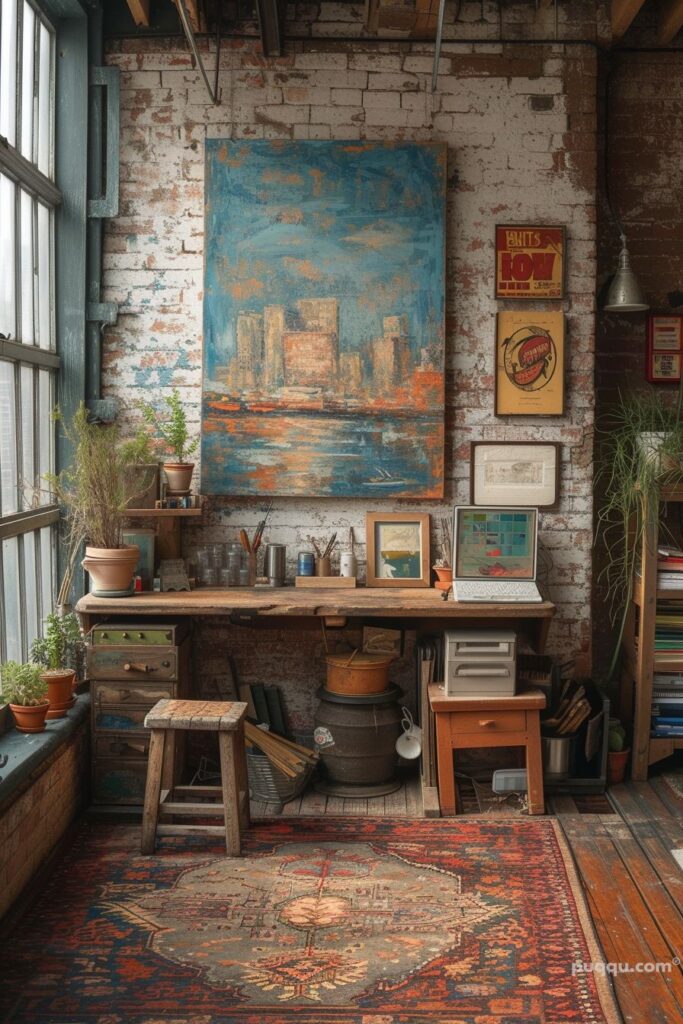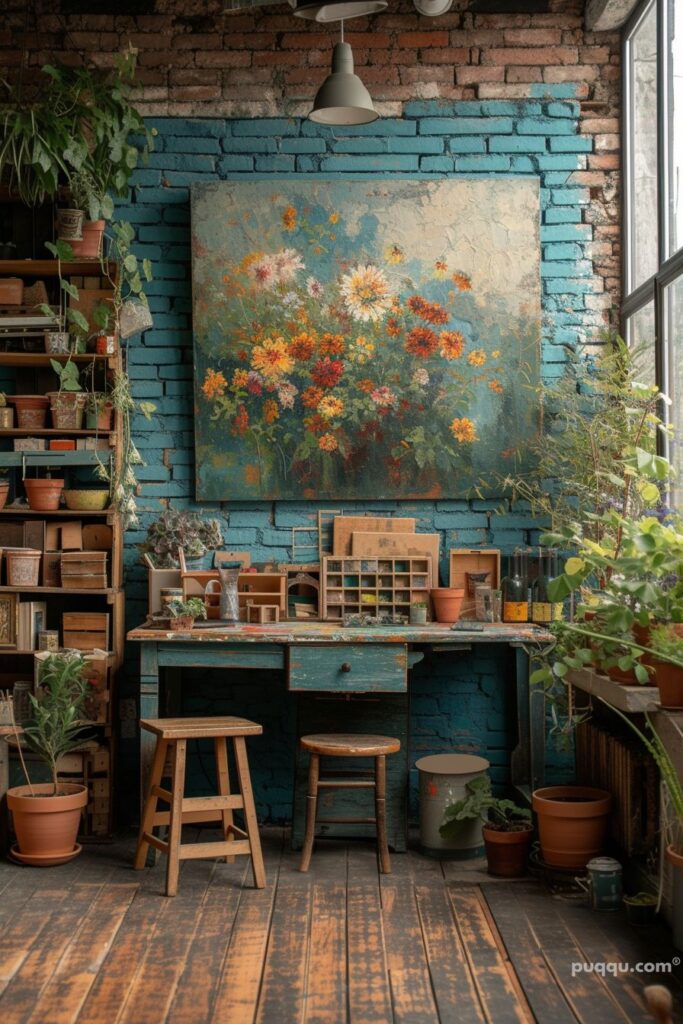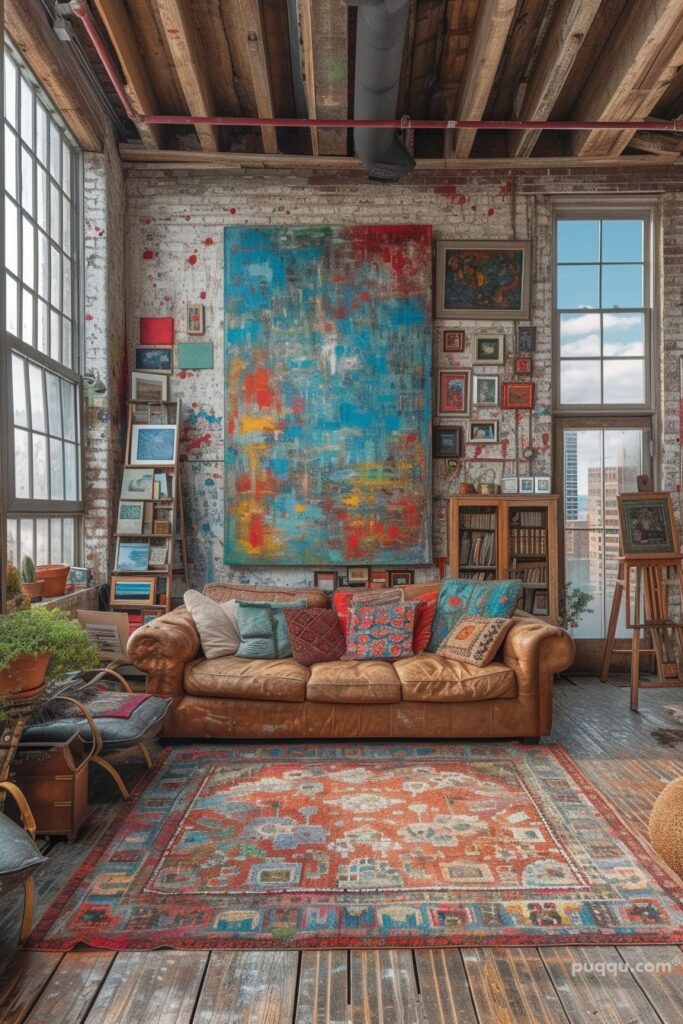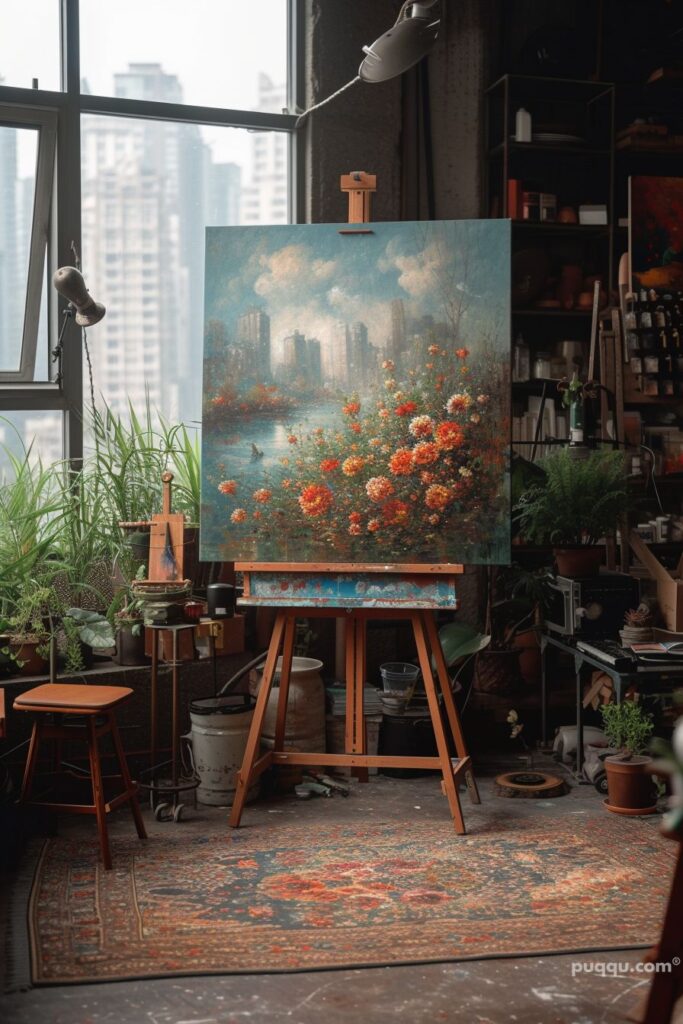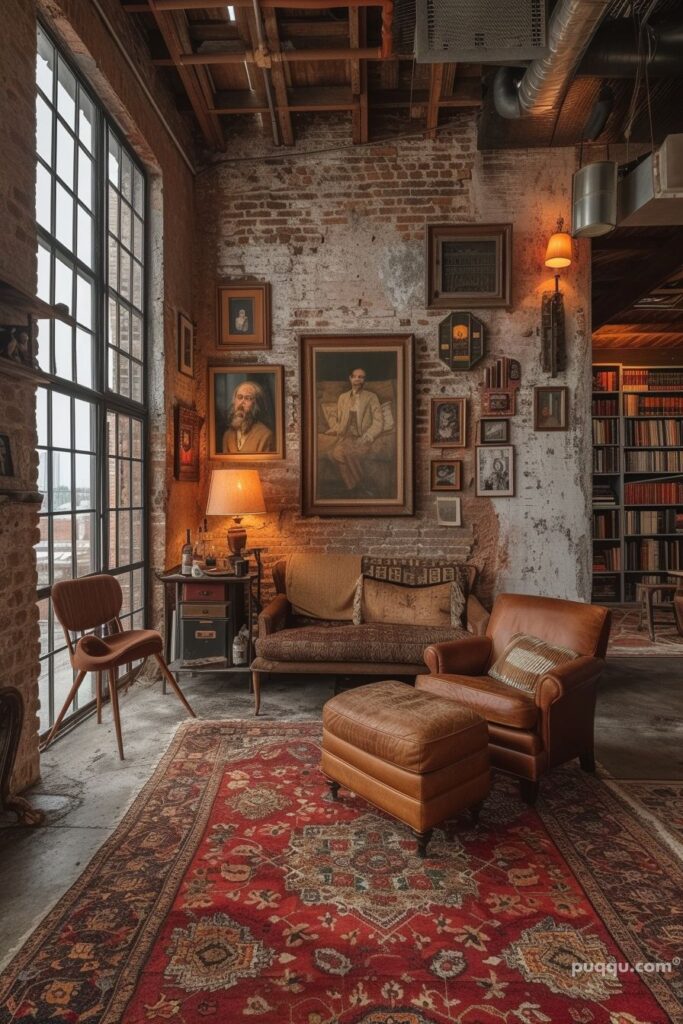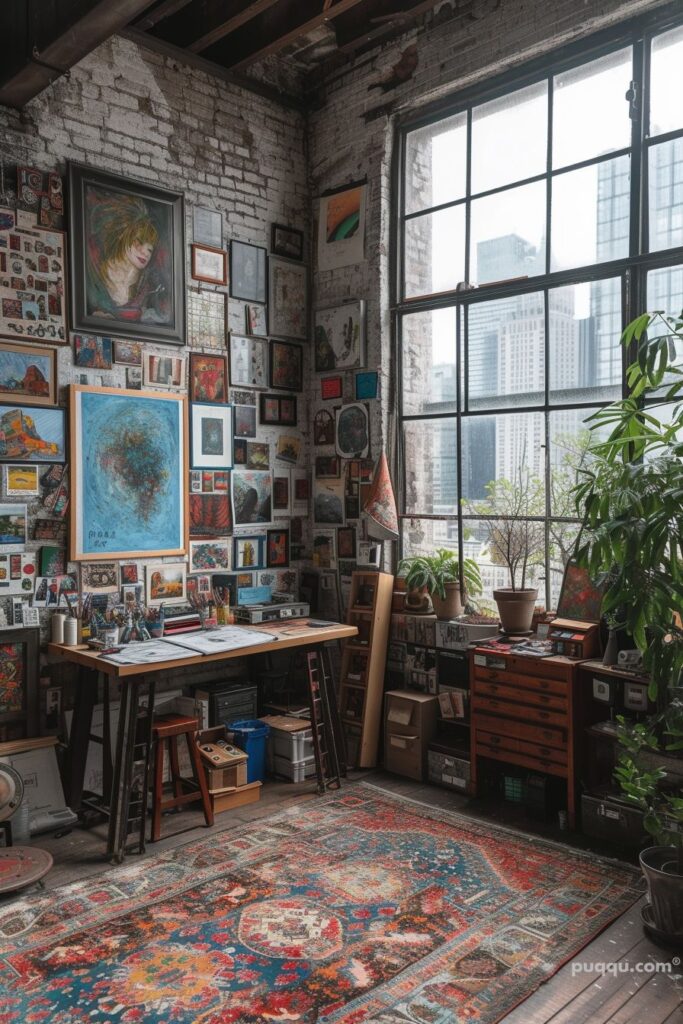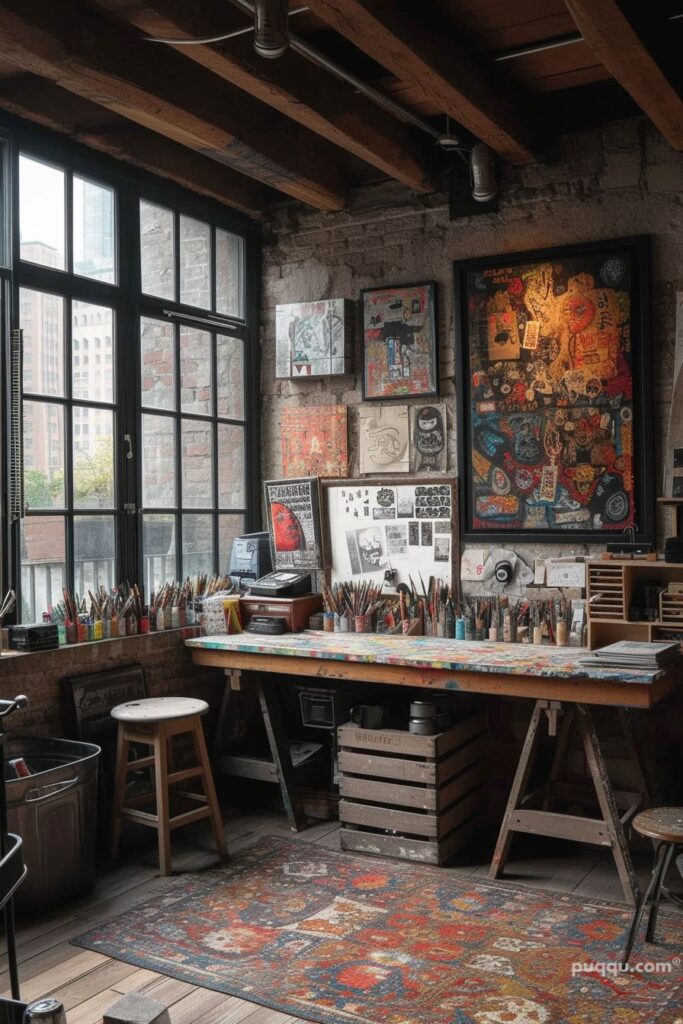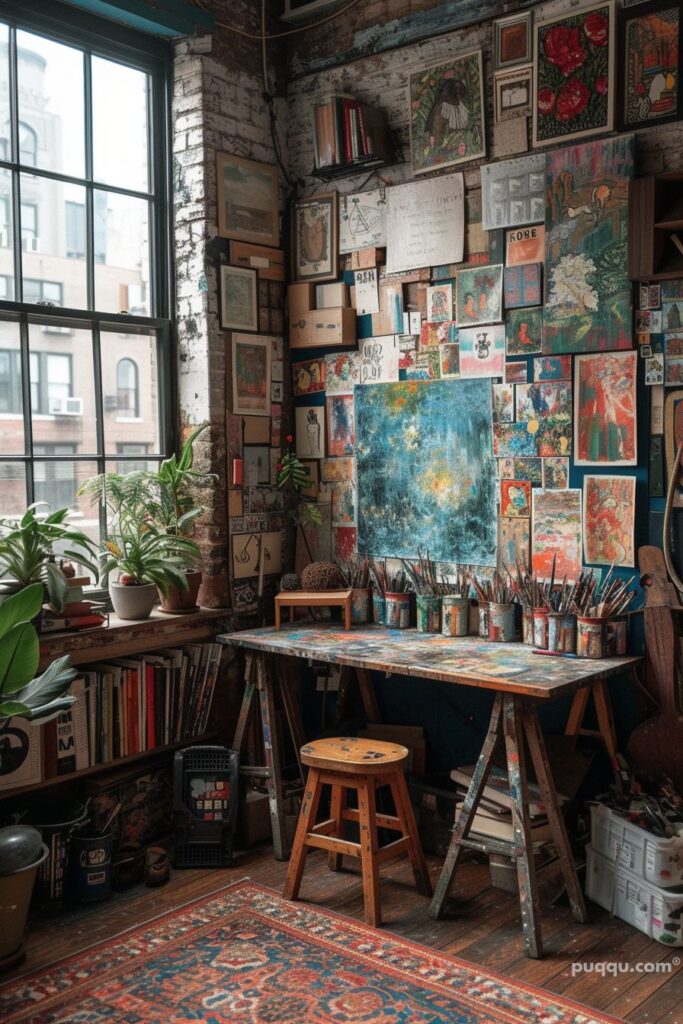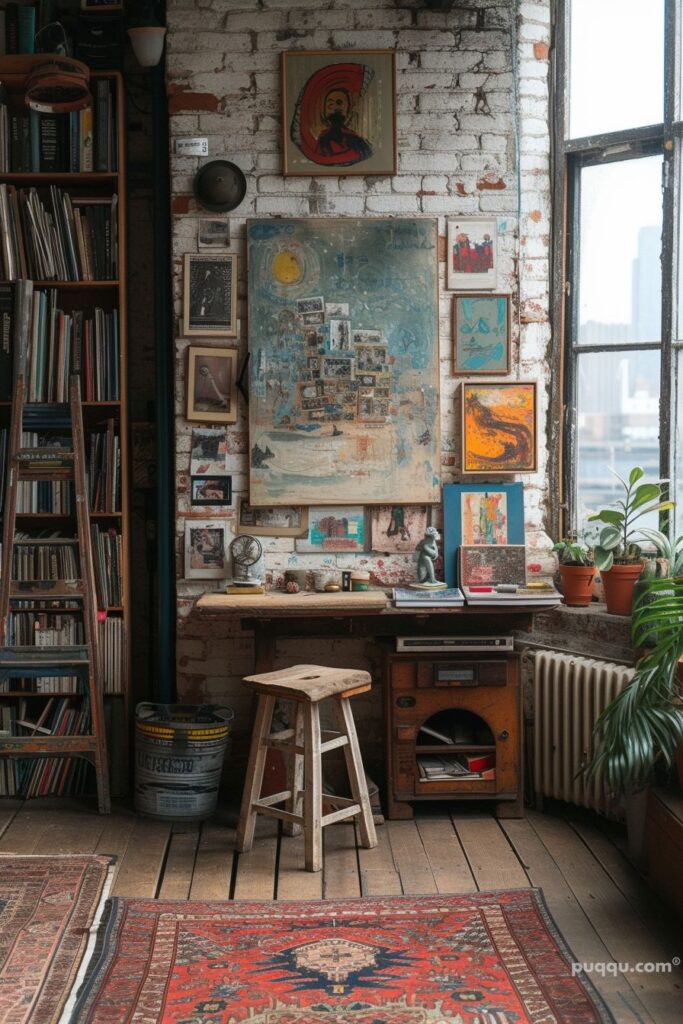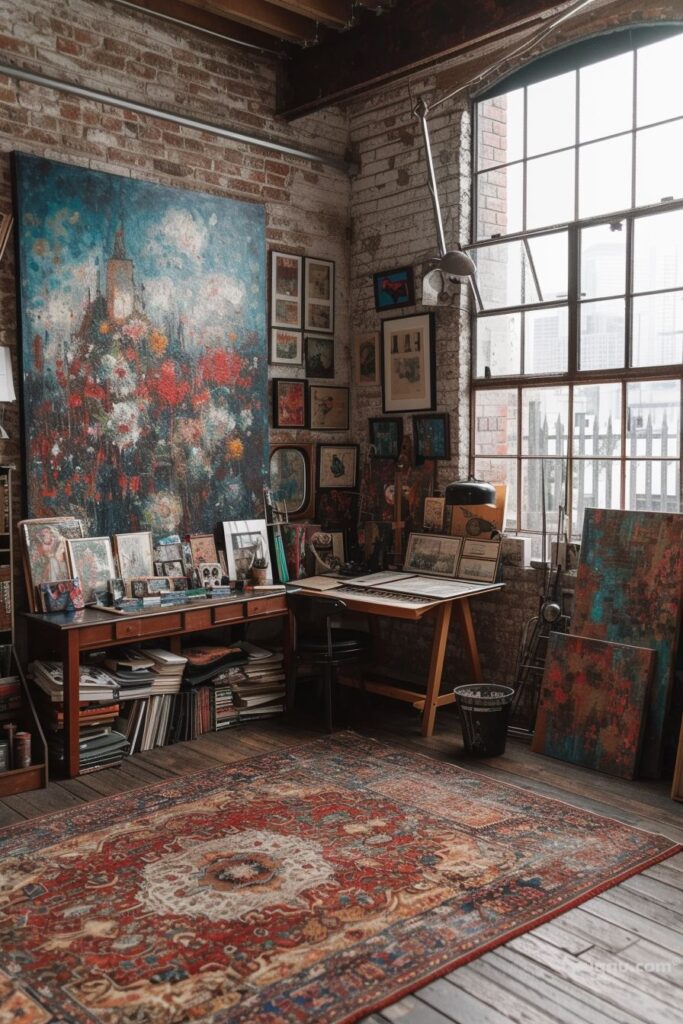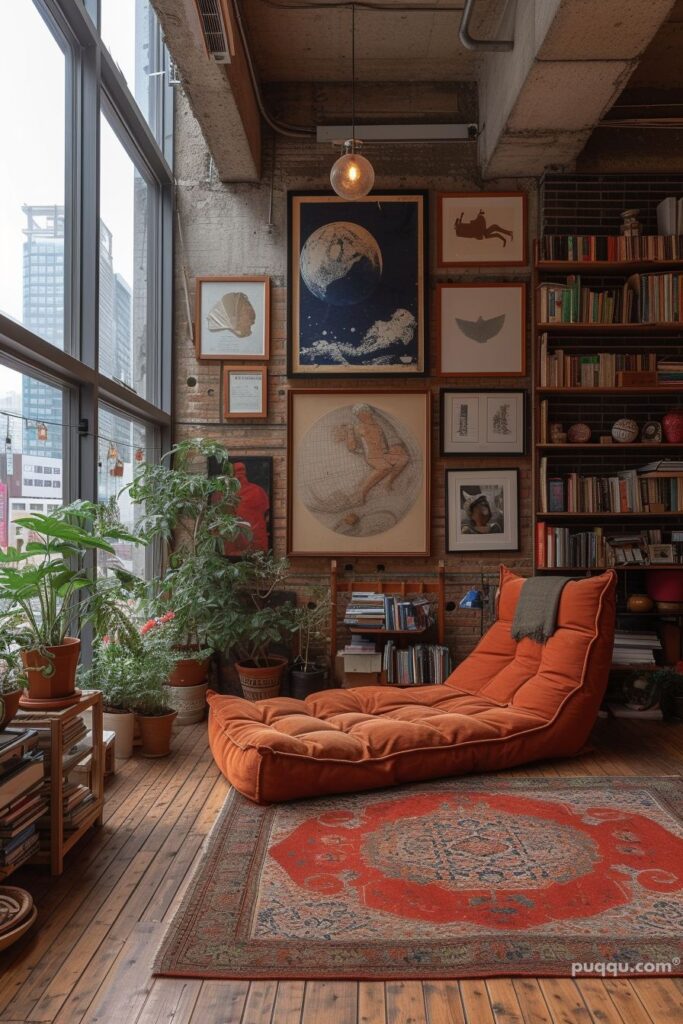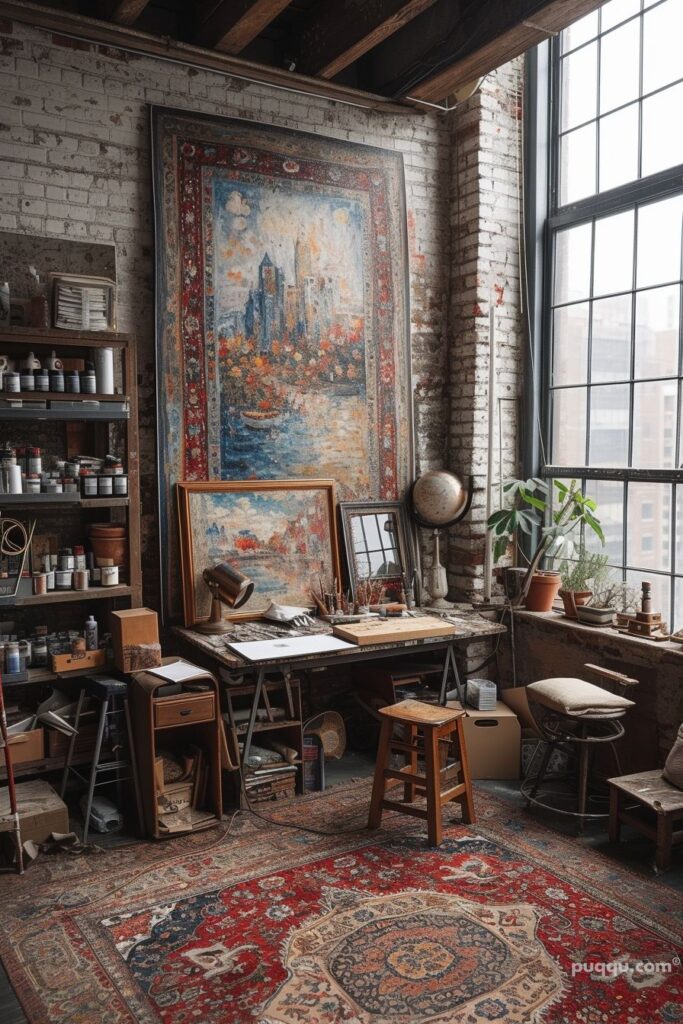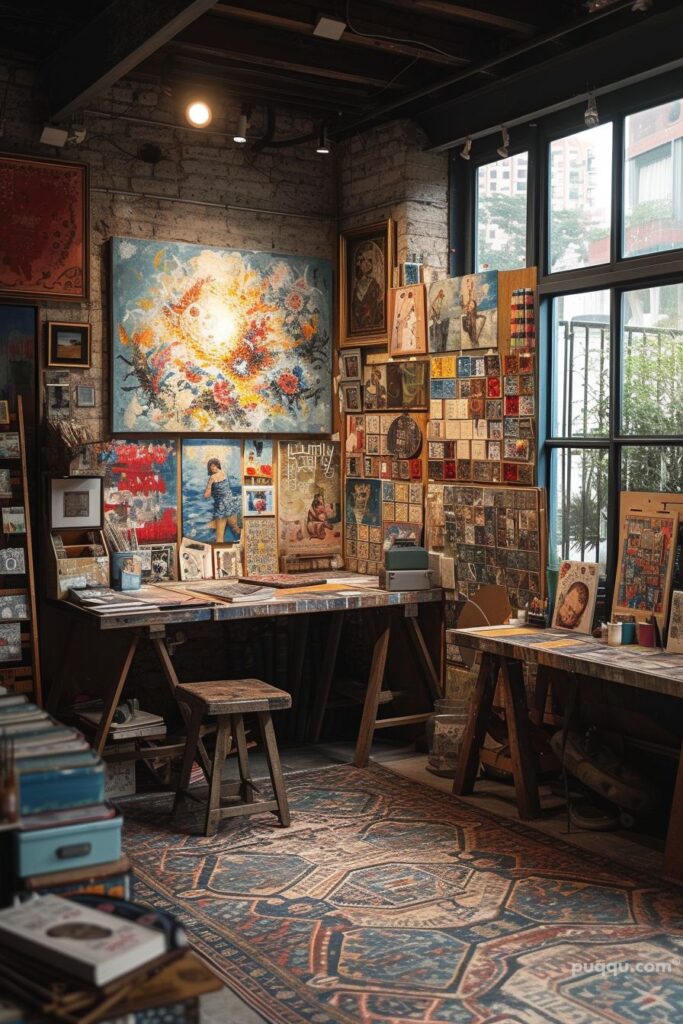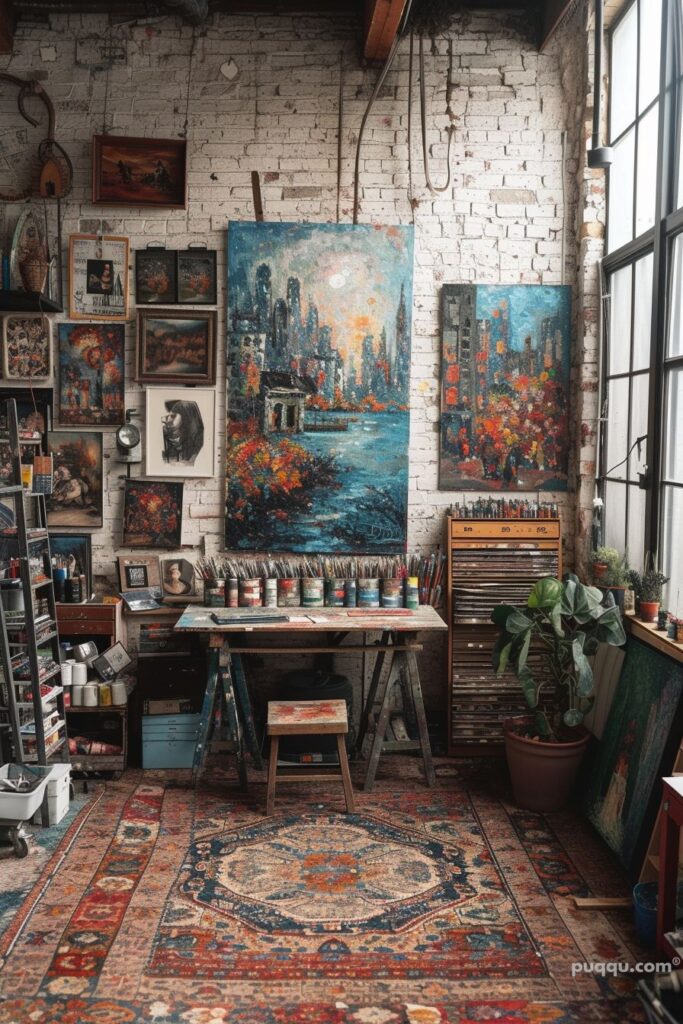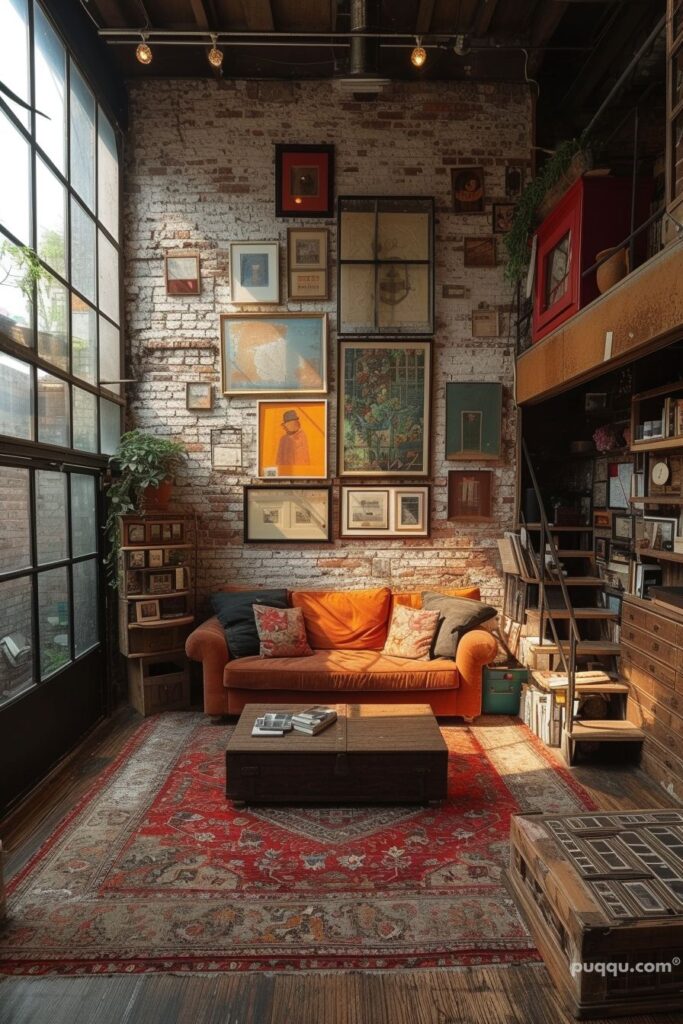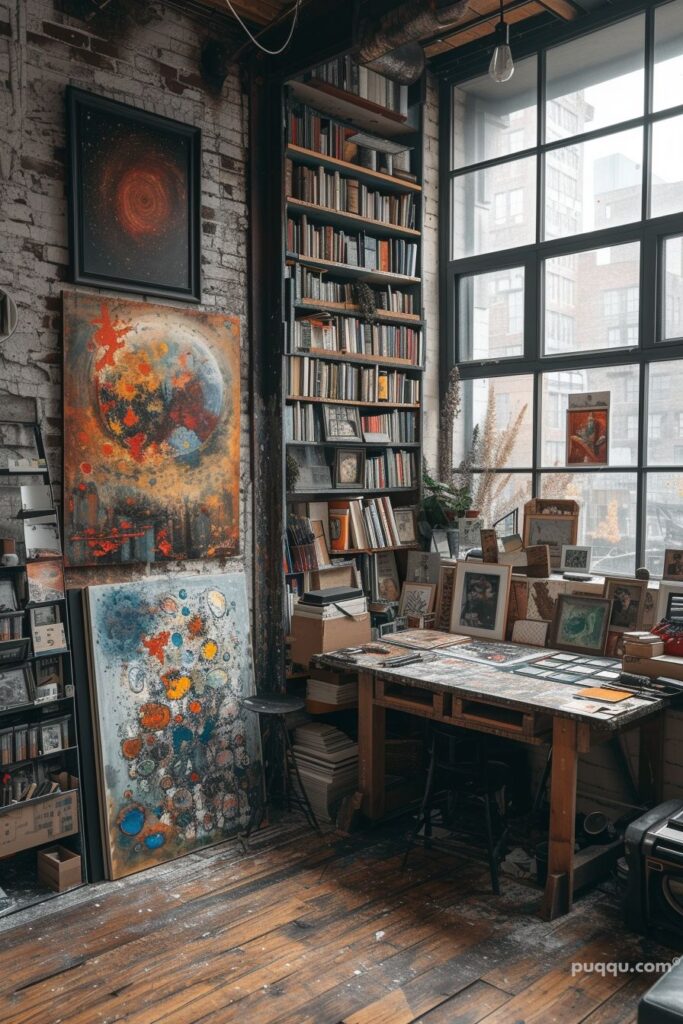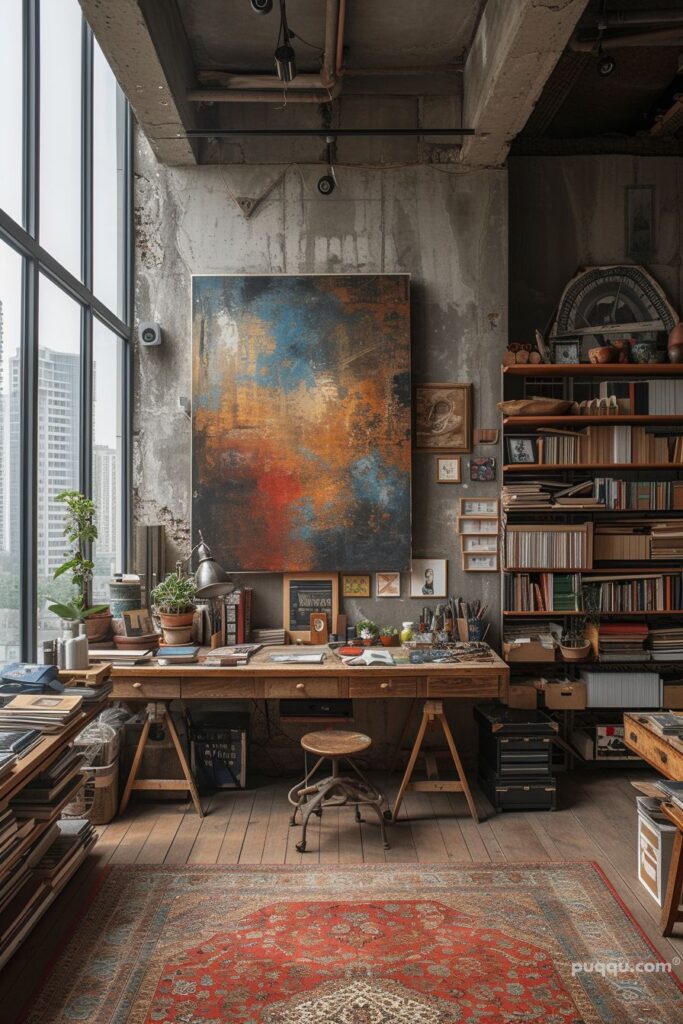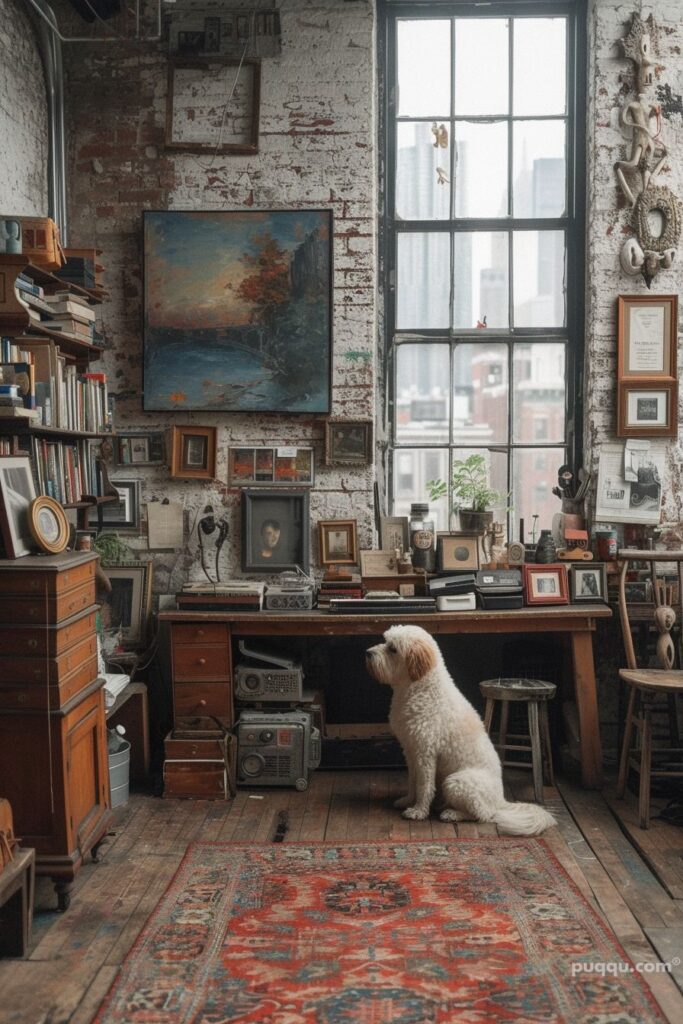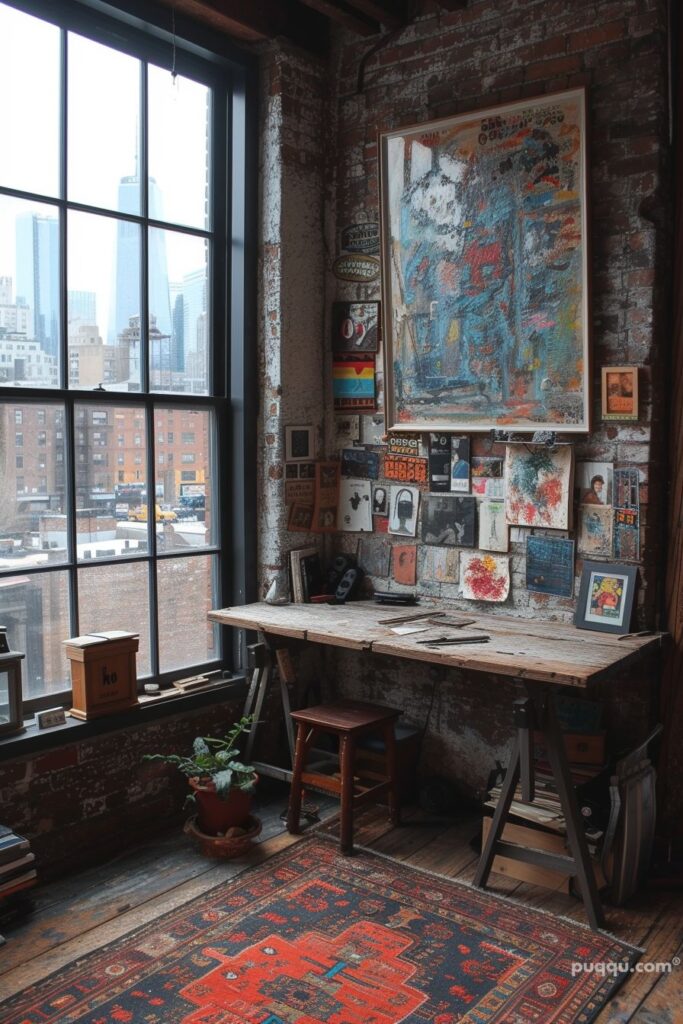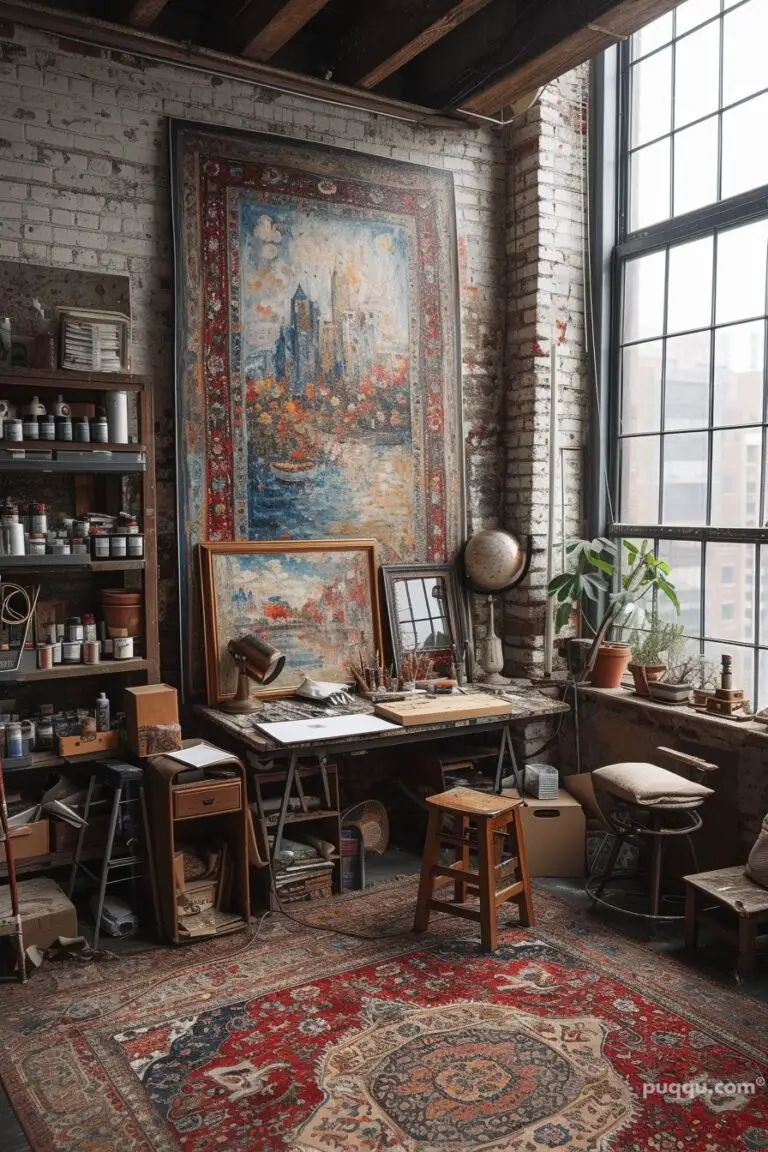Creating a home art studio can be a dream come true for artists of all levels. A dedicated space for creativity not only enhances productivity but also provides a personal sanctuary for artistic expression. Here are some ideas to help you design a stylish and functional home art studio that inspires creativity and complements your lifestyle.
Planning Your Home Art Studio
Assessing Your Space
The first step in creating your art studio is to assess the available space. Determine the size, layout, and natural light sources in the room. Whether you’re transforming a spare bedroom, a corner of your living room, or even a garage, understanding your space is crucial for effective planning.
Setting a Budget
Establish a budget to guide your studio setup. Consider the costs of furniture, lighting, storage solutions, and art supplies. A clear budget helps you prioritize essential items and manage your expenses effectively.
Choosing a Studio Style
Select a style that reflects your artistic vision and complements your home’s decor. Popular styles include modern, minimalist, rustic, and eclectic. Choose a theme that makes you feel comfortable and inspired.
Essential Furniture for Your Art Studio
Investing in a Sturdy Worktable
A sturdy worktable is the centerpiece of any art studio. Choose a table that suits your medium, whether it’s painting, drawing, or crafting. Ensure it is large enough to accommodate your projects and provides a stable surface for your work.
Selecting Comfortable Seating
Comfortable seating is essential for long hours of creativity. Opt for an ergonomic chair that supports your posture and allows for adjustable height. If you prefer standing while working, consider a height-adjustable stool.
Adding Storage Solutions
Effective storage keeps your studio organized and clutter-free. Use shelves, drawers, and cabinets to store art supplies, tools, and finished works. Consider portable storage units for easy access to frequently used items.
Optimizing Lighting for Creativity
Maximizing Natural Light
Natural light is ideal for an art studio as it provides accurate color representation. Position your worktable near a window to take advantage of natural light. Use sheer curtains to diffuse the light and reduce glare.
Incorporating Task Lighting
Task lighting is essential for detailed work. Invest in adjustable desk lamps or floor lamps with daylight bulbs. These provide focused, bright light that mimics natural daylight, reducing eye strain and improving visibility.
Using Ambient Lighting
Ambient lighting creates a comfortable and inviting atmosphere. Consider overhead lights or wall sconces to illuminate the entire room evenly. Dimmable lights allow you to adjust the brightness according to your needs.
Personalizing Your Art Studio
Displaying Inspirational Artwork
Surround yourself with inspiration by displaying your favorite artworks. Hang prints, paintings, or photographs that motivate and inspire you. This can create a visually stimulating environment that sparks creativity.
Creating an Inspiration Board
An inspiration board can be a dynamic source of ideas. Use a corkboard or magnetic board to pin up sketches, color swatches, and clippings. Regularly update your board with new inspirations to keep your ideas fresh.
Adding Personal Touches
Personalize your studio with items that reflect your personality. Incorporate unique decor pieces, plants, and personal mementos. These touches can make your studio feel like a true haven.
Organizing Your Art Supplies
Categorizing Supplies
Organize your art supplies by category for easy access. Group similar items together, such as paints, brushes, pencils, and papers. Label storage containers and drawers to quickly find what you need.
Using Clear Containers
Clear containers allow you to see your supplies at a glance. Use clear bins, jars, and boxes to store smaller items like beads, buttons, or pens. This not only keeps your supplies organized but also adds a visual appeal to your studio.
Implementing a Storage System
A well-thought-out storage system can enhance efficiency. Use pegboards, shelving units, and drawer organizers to maximize space. Keep frequently used items within reach and store less-used items higher up or in closed cabinets.
Creating a Functional Layout
Designing Zones
Design your studio with specific zones for different activities. Create separate areas for painting, drawing, crafting, and storing supplies. This organization helps streamline your workflow and keeps your studio tidy.
Ensuring Adequate Ventilation
Proper ventilation is crucial, especially if you work with chemicals or strong-smelling materials. Ensure your studio has adequate airflow by using fans, open windows, or air purifiers. This maintains a healthy and comfortable environment.
Allowing Space for Movement
A spacious layout allows for free movement and flexibility. Avoid overcrowding your studio with too much furniture or decor. Ensure there is enough space to move around and work comfortably.
Maintaining Your Art Studio
Regular Cleaning and Decluttering
Keep your studio clean and clutter-free to maintain a productive environment. Regularly tidy up your workspace, dispose of trash, and put supplies back in their designated spots. A clean studio enhances focus and creativity.
Updating Your Space
Periodically update your studio to keep it fresh and inspiring. Rearrange furniture, add new decor, or change the color scheme. Small changes can rejuvenate your space and boost your creativity.
Organizing Completed Works
Store your completed artworks safely to protect them from damage. Use portfolio cases, storage tubes, or dedicated shelving to organize your finished pieces. Keep an inventory of your artworks for easy reference.
Conclusion
Creating a stylish home art studio is about combining functionality with personal touches. By carefully planning your space, selecting the right furniture, optimizing lighting, and adding personalized decor, you can design a haven that fosters creativity and productivity. Embrace your artistic journey and let your home art studio be a reflection of your unique style.
Frequently Asked Questions
What type of lighting is best for an art studio?
Natural light is ideal, but task lighting with daylight bulbs is also important for detailed work. Combine natural, task, and ambient lighting for the best results.
How can I organize my art supplies effectively?
Categorize supplies by type, use clear containers for visibility, and implement a storage system with pegboards, shelves, and drawers. Label containers and keep frequently used items within easy reach.
What should I consider when choosing a worktable?
Choose a sturdy table that suits your artistic medium and provides a large, stable surface. Ensure it is the right height for comfortable working.
How can I personalize my art studio?
Add inspirational artwork, create an inspiration board, and incorporate personal decor items like plants, mementos, and unique pieces. These touches make your studio feel like a personal sanctuary.
What are some space-saving ideas for a small art studio?
Use vertical storage solutions, multi-functional furniture, and clear containers. Create designated zones for different activities to keep the space organized and functional.
